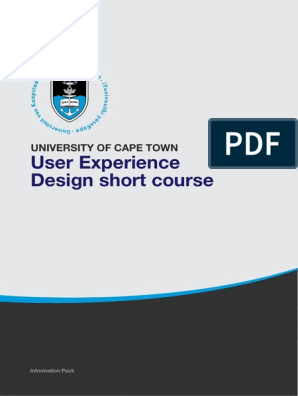0% found this document useful (0 votes)
623 views12 pagesCourse 1 - Foundations of User Experience
The document provides an overview of user experience (UX) design. It defines UX as how a person feels about interacting with a product. For a good UX, a product must be usable, equitable, enjoyable, and useful. It then describes the roles of various UX professionals including interaction designers, visual designers, motion designers, UX researchers, UX writers, UX program managers, and UX engineers. It outlines the product development life cycle of brainstorming, defining, designing, testing, and launching. It concludes with characteristics of a good UX being usable, equitable, enjoyable, and useful.
Uploaded by
Beatriz LiraCopyright
© © All Rights Reserved
We take content rights seriously. If you suspect this is your content, claim it here.
Available Formats
Download as DOCX, PDF, TXT or read online on Scribd
0% found this document useful (0 votes)
623 views12 pagesCourse 1 - Foundations of User Experience
The document provides an overview of user experience (UX) design. It defines UX as how a person feels about interacting with a product. For a good UX, a product must be usable, equitable, enjoyable, and useful. It then describes the roles of various UX professionals including interaction designers, visual designers, motion designers, UX researchers, UX writers, UX program managers, and UX engineers. It outlines the product development life cycle of brainstorming, defining, designing, testing, and launching. It concludes with characteristics of a good UX being usable, equitable, enjoyable, and useful.
Uploaded by
Beatriz LiraCopyright
© © All Rights Reserved
We take content rights seriously. If you suspect this is your content, claim it here.
Available Formats
Download as DOCX, PDF, TXT or read online on Scribd
/ 12
























































































